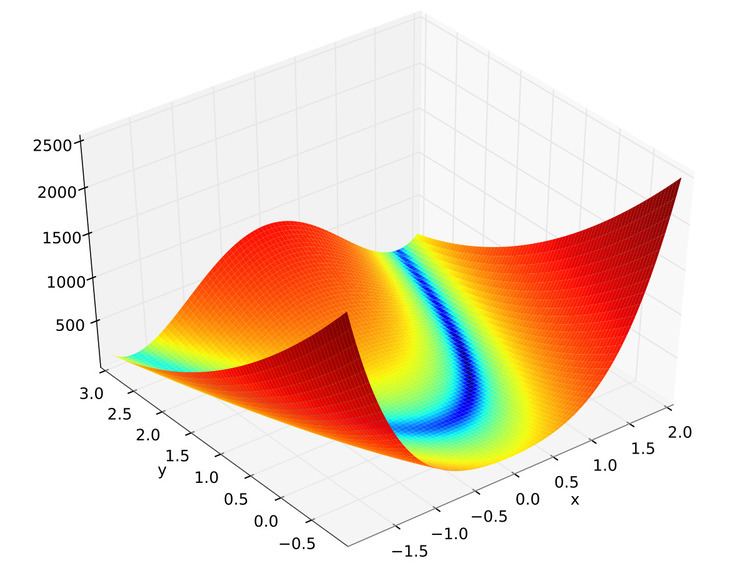 | ||
In mathematical optimization, the Rosenbrock function is a non-convex function used as a performance test problem for optimization algorithms introduced by Howard H. Rosenbrock in 1960. It is also known as Rosenbrock's valley or Rosenbrock's banana function.
Contents
The global minimum is inside a long, narrow, parabolic shaped flat valley. To find the valley is trivial. To converge to the global minimum, however, is difficult.
The function is defined by
It has a global minimum at
Multidimensional generalisations
Two variants are commonly encountered. One is the sum of
This variant is only defined for even
A more involved variant is
This variant has been shown to have exactly one minimum for
Stationary points
Many of the stationary points of the function exhibit a regular pattern when plotted. This structure can be exploited to locate them.
An example of optimization
The Rosenbrock function can be efficiently optimized by adapting appropriate coordinate system without using any gradient information and without building local approximation models (in contrast to many derivate-free optimizers). The following figure illustrates an example of 2-dimensional Rosenbrock function optimization by adaptive coordinate descent from starting point
Using the Nelder–Mead method from starting point
